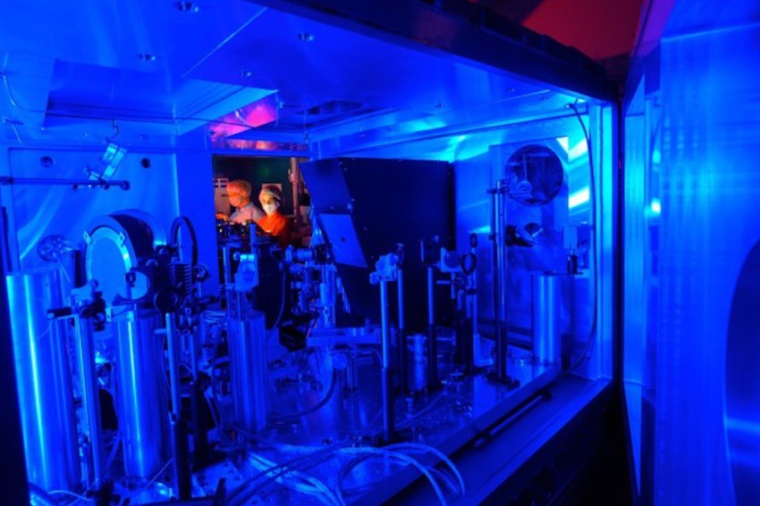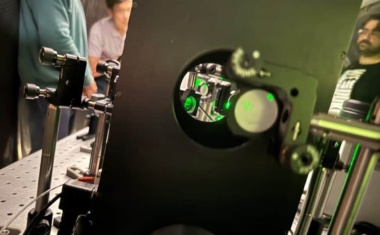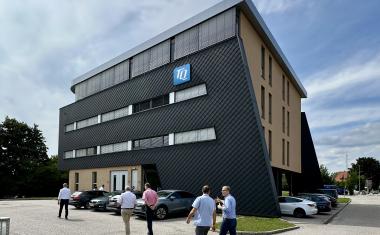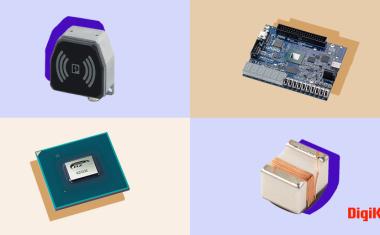Generating proton-beams with lasers
Researchers from the University Jena shed light on the best way to generate high-energy proton radiation using laser-plasma interaction.
Proton therapy is a precise and effective treatment for tumours in sensitive areas of the body, such as the brain or the eyes, with the advantage that it spares healthy tissue. In this procedure, protons are strongly accelerated and directed with precision into the tumour tissue, which is destroyed in the process. However, this efficient method of treatment has so far required large accelerators, which is why it is only available in major treatment centres. However, it would be possible to generate proton beams with smaller laser systems by using laser-plasma interaction.

Researchers have been working on this for at least two decades, but you will not find such proton lasers in standard hospitals and doctors’ surgeries. Malte Kaluza of Friedrich Schiller University Jena explains why this is the case: “The proton radiation generated by laser-plasma interaction is simply not energetic enough, even though current theoretical models predict that the conditions for this would actually be fulfilled. While energies of over 200 MeV are necessary for radiation therapy, protons accelerated with lasers have so far simply not exceeded 100 MeV.” An important step towards changing this situation has now been made by Kaluza and his team from the Institute of Optics and Quantum Electronics of the University of Jena and the Helmholtz Institute Jena.
They systematically investigated the various parameters that play a role in laser-induced proton acceleration and analysed their influence on the resulting radiation and their interaction in the process. A set of optimal conditions could be derived from this work, which would result in a maximum energy yield of the proton beam. This would make it possible in the future to configure laser systems and the conditions prevailing in the experiment in such a way that proton beams with significantly higher energy could be generated.
In proton beam generation from laser-plasma interactions, a high-intensity laser pulse is fired, for example at an aluminium or titanium foil that is only a few micrometers thick. The laser is strongly focused, which creates a plasma on the front of the foil. During the interaction of the continuing laser radiation with this plasma, an extremely strong electric field is generated on the back of the foil. This causes protons to be accelerated from the surface of the metal foil. “One could assume that in order to enhance the energy of the proton beam generated, one only needs to fire at the foil with a higher laser intensity,” says Kaluza, “but it isn’t that simple.”
In their study, the research team were able to show that when the energy of the irradiated laser pulse exceeds a specific threshold, the electric field that has been generated shifts in time and space. This causes the fastest protons to move too quickly out of the area of highest field strength and thus to be accelerated less efficiently. This explains why so far, it has not been possible to increase the maximum energy of the laser-accelerated proton beams beyond a certain value.
The Jena researchers have concluded that in order to increase the energy of the proton beams in the future, all parameters, such as the thickness of the foil, the focusing of the laser pulse and its pulse duration, must be precisely adjusted. The scientists have been able to work out theoretically for the first time how this works optimally. Kaluza and his team are now keen to know how their results can be applied in practical laser experiments, and with the current publication, they have made those findings available to the global research community. And of course, they also want to use their results themselves in future experiments on the Polaris laser. (Source: U. Jena)











